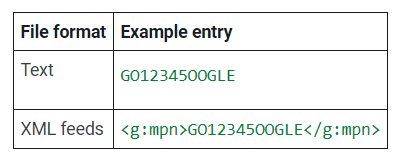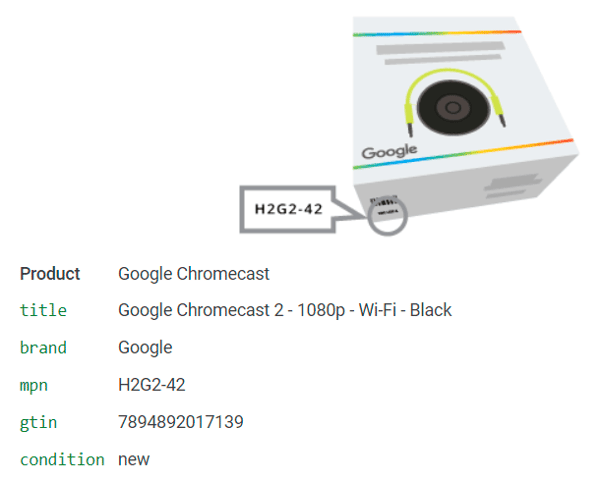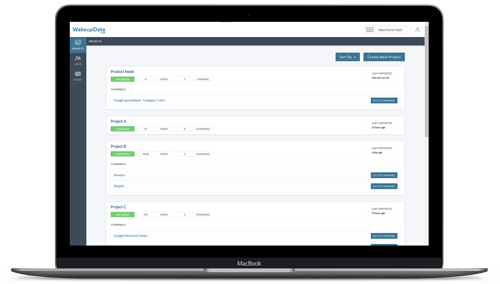What exactly is MPN?
Posted on May 20, 2019 (Last Updated: June 17, 2024)
An MPN, or manufacturer part number is a manufacturer-assigned, unique, alphanumeric value that is used to identify a product among other products from the same manufacturer.
For ecommerce retailers, many of the comparison shopping engines or marketplaces you choose to sell on will ask for you to provide the MPNs of your products. Below is an example from Google of how a typical MPN may look:

The same as with Global Trade Item Numbers GTINs, providing MPNs values for your product feeds may at first seem a labor intensive task - but in this short article we'll look at a few easy ways to get hold of your product MPNs.
As we'll show later on, your audience might even be searching Google Shopping and other channels for specific MPNs, so providing these makes sure your products are shown when it matters most.
When should you provide MPNs?
For Google Shopping, it is a requirement for all products without a manufacturer-assigned GTIN to have brand and MPN included instead. But if you already have a list of your product MPNs, you can add greater relevancy to your Google Shopping listing by providing them - even when that feed requirement is only optional.
Similarly to GTINs - some products like custom-made or homemade might not have specific MPNs, in which case you cannot provide them. If you stock products which have multiple variations (color, gender, material, etc), each of these will usually have its own MPN. In some cases, a product may not have a GTIN, meaning that an MPN and the brand of the product will be required in your data feed.
Why should you use MPNs?
There are a number of reasons why MPNs are an important part of a high-quality product feed, but we've narrowed it down to the three most important:
- Firstly, they let search engines match your products to specific search queries from your audience.
- Secondly, they allow social channels like Facebook to select relevant products for dynamic ads which will be tailored to a shopper's browsing history.
- MPNs allow easier comparison between products.
There are hundreds of categories for which MPNs can add great value. For example, white goods, electronics or building supplies can all be categories in which your customers might be searching for specific MPNs.
Let's take a look at the example below from Google.
With an electronic gadget like a Chromecast, a shopper is more likely to browse around, maybe checking out physical stores first in order to find out options, pricing, etc. Once they've reached a decision on the one they want, they may well search by specific MPN for the exact Chromecast.
Now, if you've included the MPN for your product that matches their exact query, guess whose Google Shopping listing will be ranking as #1 for that shopper?

Some comparison shopping engines, like Google Shopping, would rather have GTINs than MPNs in product feeds. In this situation, MPNs are sometimes optional. So although only optional for many channels, including MPNs can give you extra discoverability value by providing an edge over your competitors that haven't gone to the effort you have.
Amazon has its own product identification number called ASIN – Amazon Standard Identification Numbers. But when you're uploading data feeds to Amazon you should also use the product’s GTIN too.
Going after missing values like MPNs
Don't know how to access your product's MPNs? Unsure if some of your listings will have unique part numbers? That's why WakeupData provide an on-demand web crawler which can extract any missing data you might need from across the web. And that doesn't just go for MPNs or GTINs - you can also grab tags, styles scripts - you name it, our web crawler will go after it!
Find out more about how to optimize your Google Shopping feed to increase online sales, talk to our experts to find out about how you can get truly high-performing results for your campaigns today.




